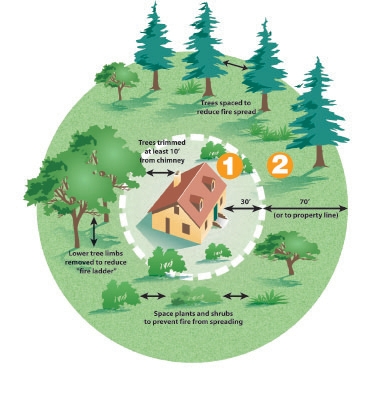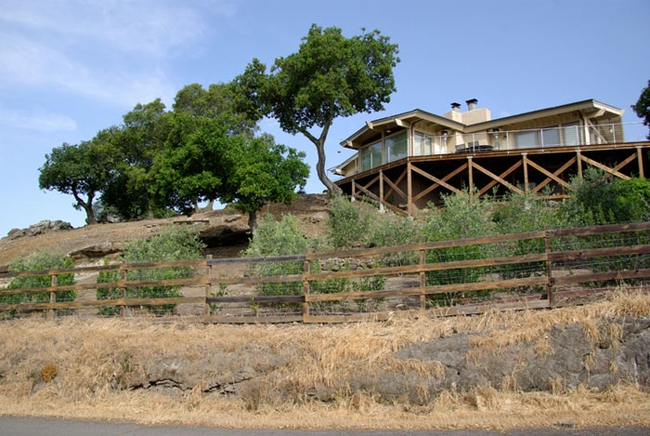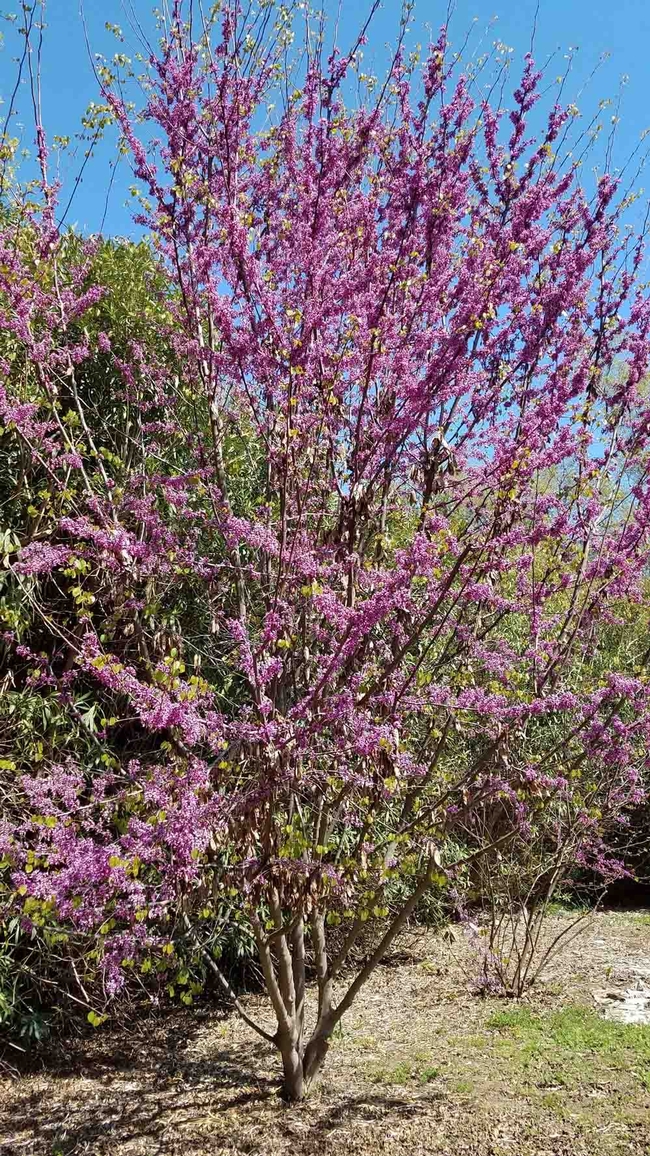It's springtime, and many of us are adding new plants to our gardens. That means it is also a good time to review the principles of creating defensible space around our homes.

The key to establishing defensible space is to utilize plants that are fire resistant and judiciously space them both horizontally and vertically. Increasing the space between plants limits the ability of fire to spread. As a rule of thumb, Cal Fire recommends that on flat ground the space from the edge of one shrub to the edge of the next be twice the height of the shrub. For example, if shrubs are two feet tall, they should be spaced four feet apart. If the shrubs are growing on a moderate slope the space between them should be four times the height of the shrub. The space between trees should be 10 feet from canopy to canopy and increase to 20 feet on a moderate slope.
If a fire reaches the crown of a tree, its heat intensity increases and this can increase the combustibility of surrounding vegetation. Low tree branches create fuel ladders that allow fires to climb into a tree. To prevent fires from ‘crowning,' these ladder fuels must be eliminated. Cal Fire recommends that the lower branches of a mature tree should be pruned to create a clearance of three times the height of the shrubs beneath it. For example if a shrub is four feet tall, the tree should be pruned so that there is 12 feet of clearance between the top of the shrub and the lowest branches of the tree. For younger trees, the lower one-third of branches should be removed.

Applying mulch is a good strategy for conserving soil water, reducing weeds and preventing erosion. Normally, materials such as wood chips, shredded bark, leaves or straw are used as mulches because these organic materials have the added benefit of enriching the soil and improving its water-holding capacity. However, organic materials burn, so within the five feet closest to a home, it is recommended that non-combustible mulches of rock, gravel, pavers or broken concrete be used instead of traditional organic materials.
When planning a firewise landscape, the contribution of hardscape features should not be overlooked. Decomposed granite, cement, asphalt or gravel pathways and driveways make effective firebreaks. Structures such as patios and masonry walls and water features like pools, ponds, and streams will also impede the advance of a fire.
Before moving beyond the 30-foot home defense zone, mention should be made of items that do not belong too close to a home. Most propane tanks should be located a minimum of 10 feet from any structure, and woodpiles should be at least 30 feet away. A cord of seasoned firewood contains the energy equivalent of approximately 174 gallons of gasoline! Would you store that much gasoline on your porch? Also, flammable liquids such as gasoline, paint thinner, and turpentine should be properly stored away from ignition sources and combustibles.

If organic mulches are used in the reduced-fuel zone, a 2008 study showed that a mulch of composted wood chips spread two to three inches deep showed the slowest fire-spread rate of the eight mulches tested. A potential disadvantage of wood chip mulches is that they tend to smolder and can be difficult to extinguish. In general, fine, stringy mulches such as shredded bark burn more rapidly than larger chunks.
Establishing defensible space can be summarized by the following three R's: 1) Remove dead and dying plant material; 2) Reduce the density of vegetation and ladder fuels; 3) Replace hazardous vegetation with less flammable, well-irrigated fire resistant plants.
Further information on fire safety for homeowners can be found on the Cal Fire website at Home - Ready for Wildfire. And for property owners who are considering landscaping from scratch, the Sonoma-Marin Saving Water Partnership has developed eight fire-rebuild landscape design plans that are well worth considering (Water Smart Landscape Design Templates - Sonoma- Marin Saving Water Partnership).
For more information on creating fire resistant landscapes, attend our Firewise Gardening workshop on May 2, part of the Master Gardeners' 2024 Spring Workshop Series. For information about all the workshops, and to register, visit our website. All workshops are free, but registration is required.
Why not buy some plants for your fire-resistant landscape at the Master Gardeners' Plant Sale on Saturday, May 18, 2024? The sale will be held at our Demonstration Garden at Patrick Ranch, 10381 Midway, between Chico and Durham, from 9 am till noon. For more information, and a partial list of plants, see our Plant Sale webpage.
UC Master Gardeners of Butte County are part of the University of California Cooperative Extension (UCCE) system. To learn more about us and our upcoming events, and for help with gardening in our area visit our website. If you have a gardening question or problem, email the Hotline at mgbutte@ucanr.edu or leave a phone message on our Hotline at 530-552-5812. To speak to a Master Gardener about a gardening issue, or to drop by the MG office during Hotline hours, see the most current information on our Ask Us section of our website.